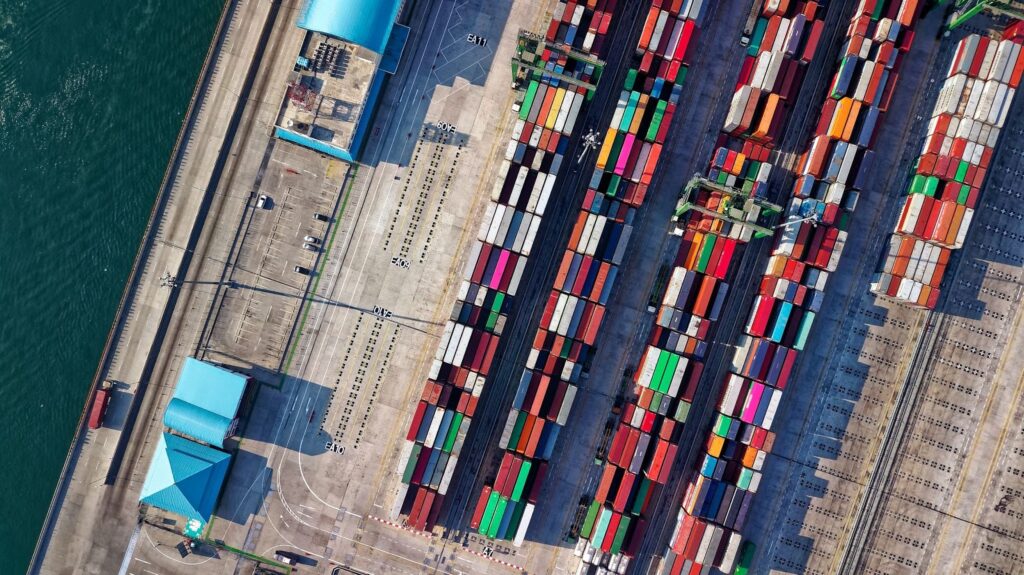If you’re sick of poor communication with suppliers or lengthy shipping times, you could benefit from supply chain optimization. This optimization process is often intimidating for small business owners, but it doesn’t have to be.
Read on to learn about five simple practices to optimize your supply chain and boost cost-effectiveness.
What Is Supply Chain Optimization?
The main goal of supply chain optimization is to improve the overall performance of a supply chain. A supply chain is a key component of business operations for any business trying to get their products to their customers.
An inefficient or ineffective supply chain can wreak havoc on a business, no matter how great its products are. If the right products aren’t able to get to the customer safely and efficiently, customers will not be satisfied and the reputation of the business will be negatively impacted.
Businesses are able to use technology to optimize their supply chain effectively. There are three different components that you need to consider when optimizing your supply chain:
- Supply chain design relates to designing the supply network to determine where warehouses should be located and how different products will be stocked in each for the most efficient customer delivery.
- Supply chain planning relates to planning inventory and coordinating business assets to balance supply and demand effectively.
- Supply chain execution relates to the different applications and systems involved in the supply chain, including inventory management, transportation management, and warehouse management.
What Are the Different Types of Supply Chain Optimization?
There are two different types of supply chain optimization: local and global.
- Local optimization: This type of optimization relates to optimizing a single area of your supply chain without taking into account how changing this one area will affect the other components of the supply chain. While this type of optimization may seem simple at first glance, it can quickly become complicated thanks to unintended consequences on other areas of your supply chain.
- Global optimization: This type of optimization relates to optimizing all areas of your supply chain. While this type of optimization may seem complicated and overwhelming, there are tools and best practices that you can utilize to do it efficiently and cost-effectively.
Why Do You Need to Optimize Your Supply Chain?
Here are some of the reasons why you need to optimize your supply chain:
- Improves Your Customer Service: Customer service is a key component of any business. Supply chain optimization can help boost your customer service by getting your customers the right products to the right place in a timely manner. As a result, customers will not only be satisfied with your products — but they will be satisfied with their overall experience with your company and will be more likely to purchase again in the future.
- Increases Your Competitive advantage: Competition abounds in every industry. You can use supply chain optimization to keep up with the big-name players that may have more resources than you do. Supply chain optimization allows you to take advantage of what you do have and earn a competitive advantage in the process.
- Allows Flexibility: The world we live in is always changing — so your supply chain needs to be prepared to change at a moment’s notice to meet changing demand, competition, and supply.
- Improves Sustainability: Now more than ever, customers are concerned with sustainability and want to purchase from companies that prioritize the environment. Supply chain optimization can help you come up with a sustainable supply chain that will impress customers and help preserve our beautiful planet.
5 Simple Ways to Optimize Your Supply Chain
Here are five simple steps that you can take to optimize your supply chain:
1. Choose the Right Suppliers
The basis of your supply chain is your suppliers. For this reason, the first thing you need to do when optimizing your supply chain is to choose the right suppliers. When choosing and evaluating suppliers, you need to ensure that there’s good communication and that they are responsive to any questions or issues that come up.
You also need to ensure that they are reliable and keep their word in terms of orders and shipping. Finally, you need to ensure that your suppliers are able to complete your orders fast enough to meet customer demand. Once you have chosen the right suppliers, you need to build strong relationships with them to help stabilize and optimize your supply chain.
2. Come Up With a Supply Chain Strategy
You should prioritize three factors: simplicity, cost-efficiency, and reliability. From there, you can come up with a strategy that helps you achieve these three factors.
When coming up with your supply chain strategy, you should consider your business type, third-party logistics providers, and supply chain resiliency.
3. Embrace Demand Planning
Demand can change in an instant and throw off your entire supply chain. When you optimize your supply chain, you are able to predict changes in demand better, thanks to demand planning.
Demand planning utilizes historical data to forecast customer demand for different products throughout the year. When you know when demand will increase, you can prepare your suppliers and other vendors to accommodate this increase.
Similarly, supply planning involves planning around factors that may affect your suppliers — including things like holidays, potential weather issues, etc. For instance, you may want to account for weather delays if you’re working with an Indian vendor during monsoon season.
4. Expand Your Data
Many businesses struggle with a lack of data. However, even if you have the right data, you may not be able to incorporate it into a complete picture, thanks to data silos. Data silos exist as businesses work with a variety of different systems and sectors. And while it may make sense to separate the data to keep it simple, this is not the right approach.
Instead, you need to eliminate data silos and incorporate all the different data areas so that everyone has access to the data they need to do their jobs. Doing so will ensure that everyone is on the same page and your supply chain continues to run smoothly.
5. Continuously Review and Update
Supply chain optimization is a constant process that never ends. For this reason, you need to review and update your system continuously. Being proactive will help you stay ahead of the curve instead of constantly playing catch-up.
When you identify an underperforming area, you need to take steps to address and optimize it. For instance, you may want to consider using a local delivery service to improve delivery time and lower costs. We recommend auditing your supply chain performance at least once per quarter. Look for negative patterns, identify the root cause, and make the necessary changes to address them.
The Rundown on Supply Chain Optimization
Supply chain optimization can be made simple so long as you follow these five steps. If you need any additional help along the way, feel free to reach out to Greg Gillman for tailored expertise.
Sources:
What Is Supply Chain Optimization? | IBM
12 Essential Tips For Businesses To Improve Their Customer Experience | Forbes


